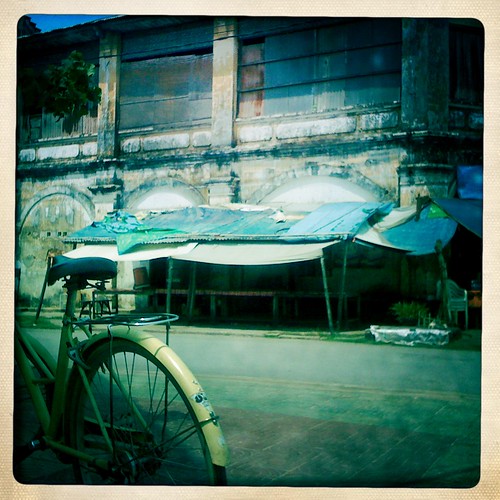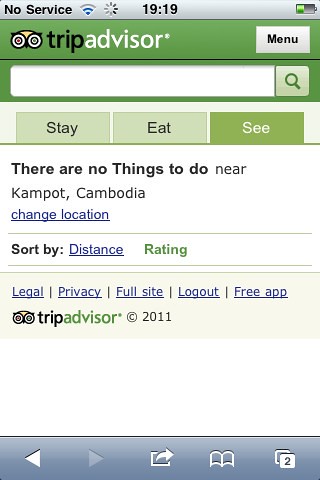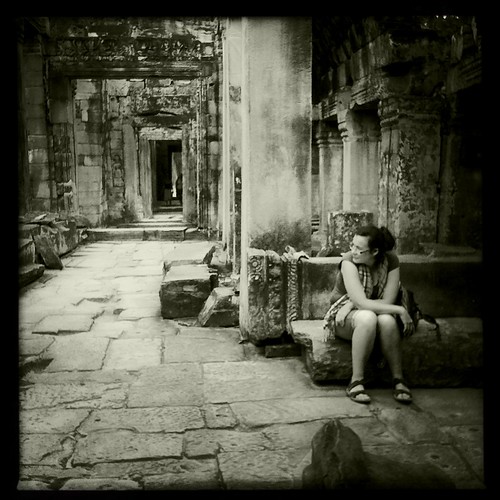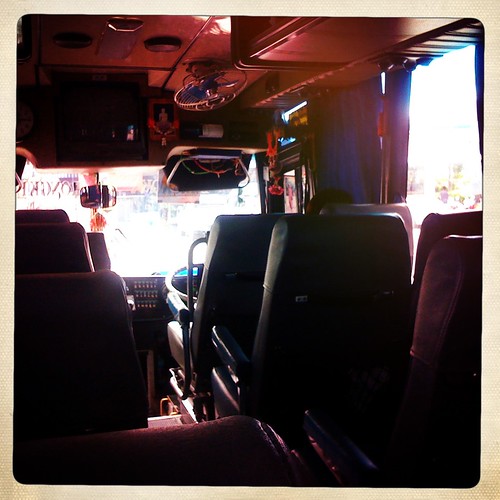
|
|
Pleasantly Post-Apocalyptic Kampot, originally uploaded by Mister Wind-Up Bird. |
Kampot has a pleasantly post-apocalyptic feel. Cambodian women in pink flannel pyjamas bicycle silently past blocks of crumbling French architecture. Decades of neglect, haphazard repurposing and jury rigging have transformed the colonial shops and villas into something odd and transient. A few travelers sit in wicker chairs in front of a coffee shop–nearly the only business open on a wide, leafy boulevard–eating baguette sandwiches and drinking iced Vietnamese coffee. Early 00s electrolounge plays in the background. The music’s good. The coffee is excellent. If we were approaching the end of days, I would want to run down the clock in a place like this. The rest of the world seems very far away.
The community of foreigners here this time of year are oddballs and misfits, long-term travelers and burn-outs. Our guesthouse is run by an amiably stoned Scottish(?) electronic musician with an accent it takes all our concentration to decipher. We met a German girl who announced “I have no social skills!” as she squeezed into the sofa beside us and launched into a meandering story involving automatic motorcycles and her Cambodian dog. A lot of people here seem to be here to get away from somewhere else, even if it’s just cooler-than-thou backpackers stepping off the regular trail without leaving their Lonely Planet Cambodias behind. But somehow that makes it even more interesting than a place that has a reason to be a destination. You could hide out down here a long, long time before the real world ever found you. And nobody would even think it strange.

|
We rented bicycles today to cycle through the town and countryside of palm trees and dry rice paddies. I think it made us a bit of an oddity: once out of the town center, every single child we encountered wanted to wave to us and try out their English, mostly by shouting as we biked past. “Hello! How are you? Hi! Where you go?” It was, to be honest, incredibly charming.
Unfortunately, we can’t stay in Kampot long, and things are changing so rapidly in Cambodia, I have no idea if it will have the same vibe in a few years. Coming here was a bit of a spur-of-the-moment thing, but I’m really glad we did. And now I know where to escape to if I’m ever on the run.

